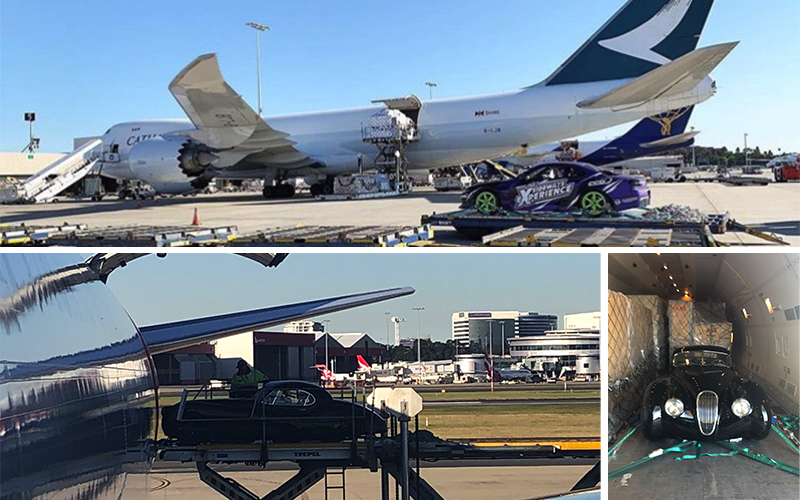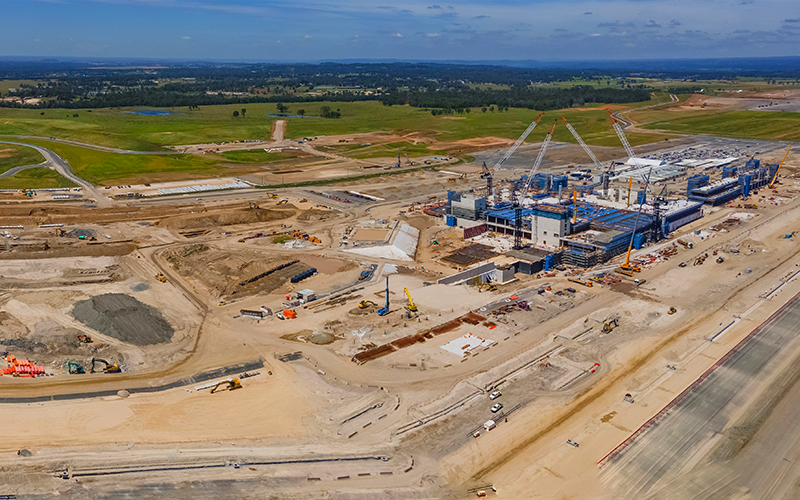Sydney is the most populous city in Australia, houses the highest concentration of Australia’s urban tourist attractions, and Sydney Kingsford Smith International Airport (SYD) is the country’s busiest. So it may come as no surprise, that it also handles the most air cargo in the country as well.
According to the government of New South Wales, SYD flew 45 per cent of Australia’s air cargo in 2019 (just before the pandemic), with 80 per cent of that carried in the belly of passenger aircraft. That means the twice-weekly Cathay Pacific Cargo freighter, which operates via Melbourne and Toowoomba Wellcamp Airport, probably takes up a decent chunk of the remaining 20 per cent.
But take nothing for granted: ‘It’s a very competitive market, the most competitive in Australia,’ says Tijana Stefanovic, Cargo Sales Manager Sydney.

Increasing frequencies
Currently, Cathay Pacific operates 40 pairs of Sydney passenger flights per week, with three flights a day on some days, flown by a mix of Boeing 777s and Airbus A350s. Pre-pandemic, there was a four-times daily passenger service. ‘We’re expecting to go back three-times daily operation in the relatively near future,’ says Stefanovic. The capacity of those aircraft differs: the team works to a basic standard load, and can adjust to the bigger capacity of the 777 if time allows.
During the pandemic, there was a lot of shuffling cargo across the country to meet the passenger flights that were operating. ‘We were thankful in that we did not stop altogether despite the impact of the pandemic on our operations,’ she adds. ‘While there are always things that may affect the business, we have learned to adapt and provide alternatives for shippers and agents to keep shipments moving. The freighter was very helpful in this regard, and it feels as if we’re really back to our regular daily operation with minimal disruptions, if any.’
Now, with services resumed at Cathay Pacific’s other Australian ports, the Sydney team can start to refocus on their local market, ‘although we are still helping out Brisbane with some extra capacity when they need it,’ adds Stefanovic.
‘We are fortunate we are a “network carrier”,’ she adds. ‘This means shippers and agents in Sydney with year-round or seasonal shipments to Hong Kong, the Chinese Mainland, North or South East Asia can be offered shipment solutions because of our strong network to these regions, with lots of frequency. However, if we are asked to quote on an ad hoc shipment of machinery to Houston or Milan or valuables to London or New York we can offer these solutions as well.’

Shipment types: from perishables to engines and dangerous goods
The New South Wales government states that the main cargo types being flown out of the state are comprised of ‘premium or time-sensitive, perishable goods’. Stefanovic agrees. ‘So we move quite a lot of health products, like supplements and vitamins, and we used to carry a lot of milk powder to the Chinese Mainland, although that market moved away from airfreight during COVID-19.
‘The big market is general cargo, but we’ve got perishables too with fruit and veg throughout the year, and cherries are starting to come into season now a bit late after some poor weather. They’re expected to go through to the end of February.’
Cathay’s experienced cargo team of five in the Sydney office is split between commercial and operational, and they also plan for a lot of aircraft engines, a segment which is becoming more prolific as aviation picks up. ‘This is something that we specialise in because of the main deck advantage our freighter gives us,’ adds Stefanovic. ‘We always look forward to moving those from here for servicing in Europe, the US, Asia and the Chinese Mainland.’
Another big growth area is in dangerous goods, particularly products containing lithium-ion batteries. Again because of the freighter, Cathay Pacific Cargo has something of an advantage. ‘While we carry a range of DGs under our Cathay Dangerous Goods solution, the lithium-ion shipments have really grown since we introduced our range of fire containment bags. We’ve seen big growth in requests for this and our competitors simply can’t do it,’ says Stefanovic. ‘We also carry quite a few valuable shipments under the Cathay Secure solution.’
Another interesting regular shipment is cars: both individual shipments and also from automakers, which choose Australia for testing because the variety of rugged terrains and the relative absence of prying eyes.

A promising future
In the same way that Hong Kong awaits the full operation of the three-runway system, Sydney’s next move is in the future too: an entirely new airport. Construction of Western Sydney International Airport (Nancy-Bird Walton) is underway, with a view to starting operations in 2026. It will bring with it one big advantage for the air cargo industry – 24/7 operations. Sydney Kingsford Smith International Airport currently operates a curfew between 11pm and 6am local time, which inhibits the potential growth in cargo capacity, which was forecast in 2016 to be 65 per cent by 2036. A new airport could stimulate more growth besides, with plans for a new CBD in the heart of a new smart city.
Equally transformative to the Australian air cargo market has been the adoption of digitalisation by forwarders and agents, as Nigel Chynoweth, Regional Head of Cargo South West Pacific, points out. ‘While it has been a tough few years we have seen some real progress in the adoption by agents to digitisation,’ he says. ‘We have seen disruptions to supply chains minimised with the use of our Click & Ship e-booking platform, increased use of e-AWB and an increase in e-freight shipments. We have also seen agents using our next-generation Ultra Track track-and-trace functionality.
‘These small adjustments in approach mean there is increased transparency in what we do for each other, and the discussions we have with agents are at a higher business development level. More often than not, shipment queries centre on the service that needs to happen, rather than just questions about where a shipment is located.’
With this level of innovation in infrastructure, and the embracing of digital technology, Sydney seems set to maintain its number one status – and soar still higher.









